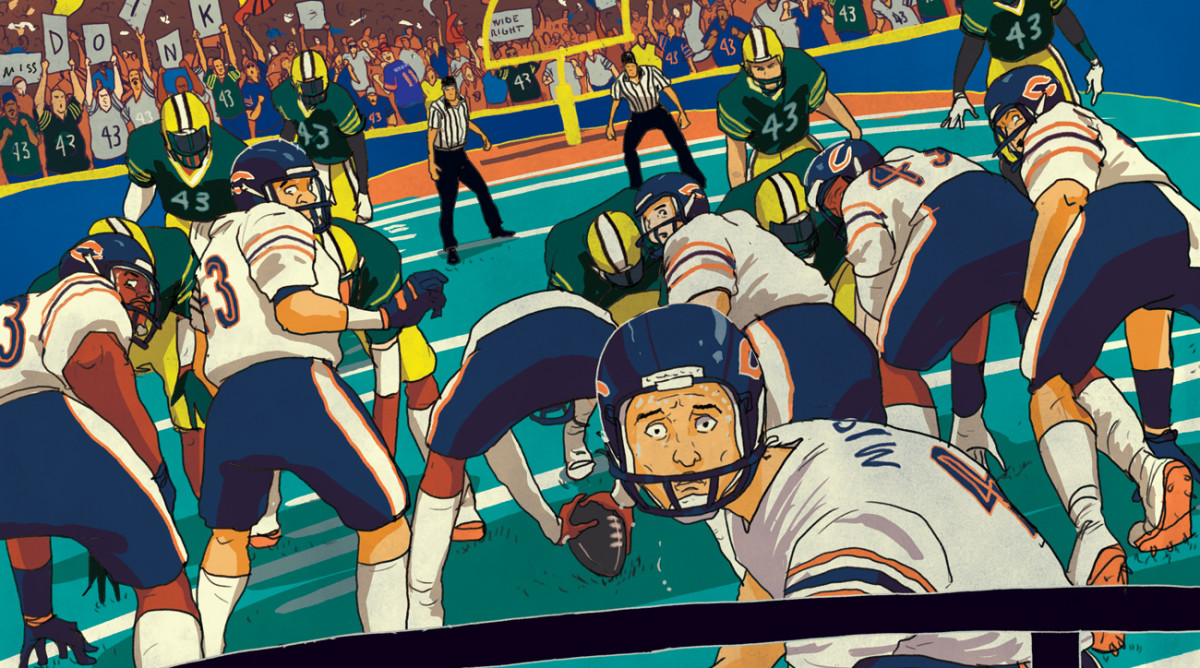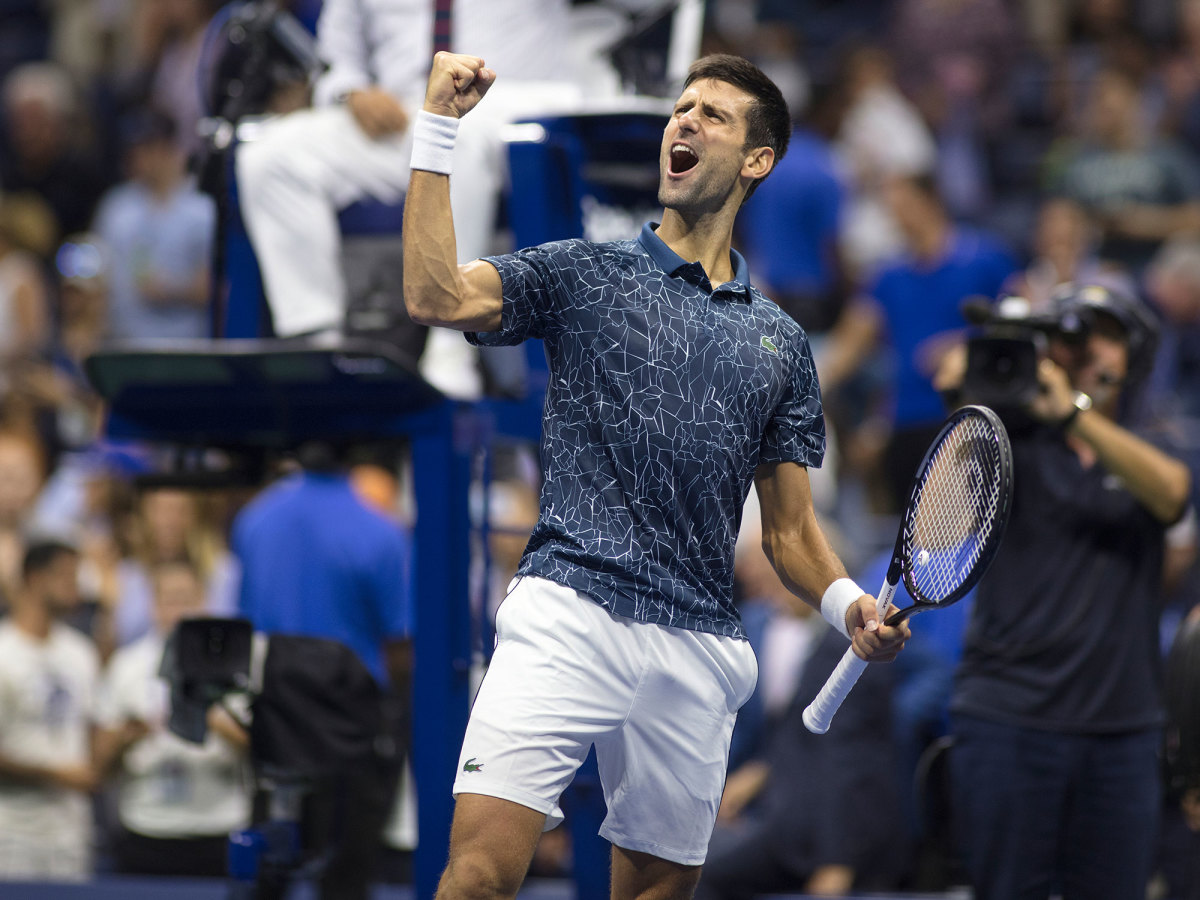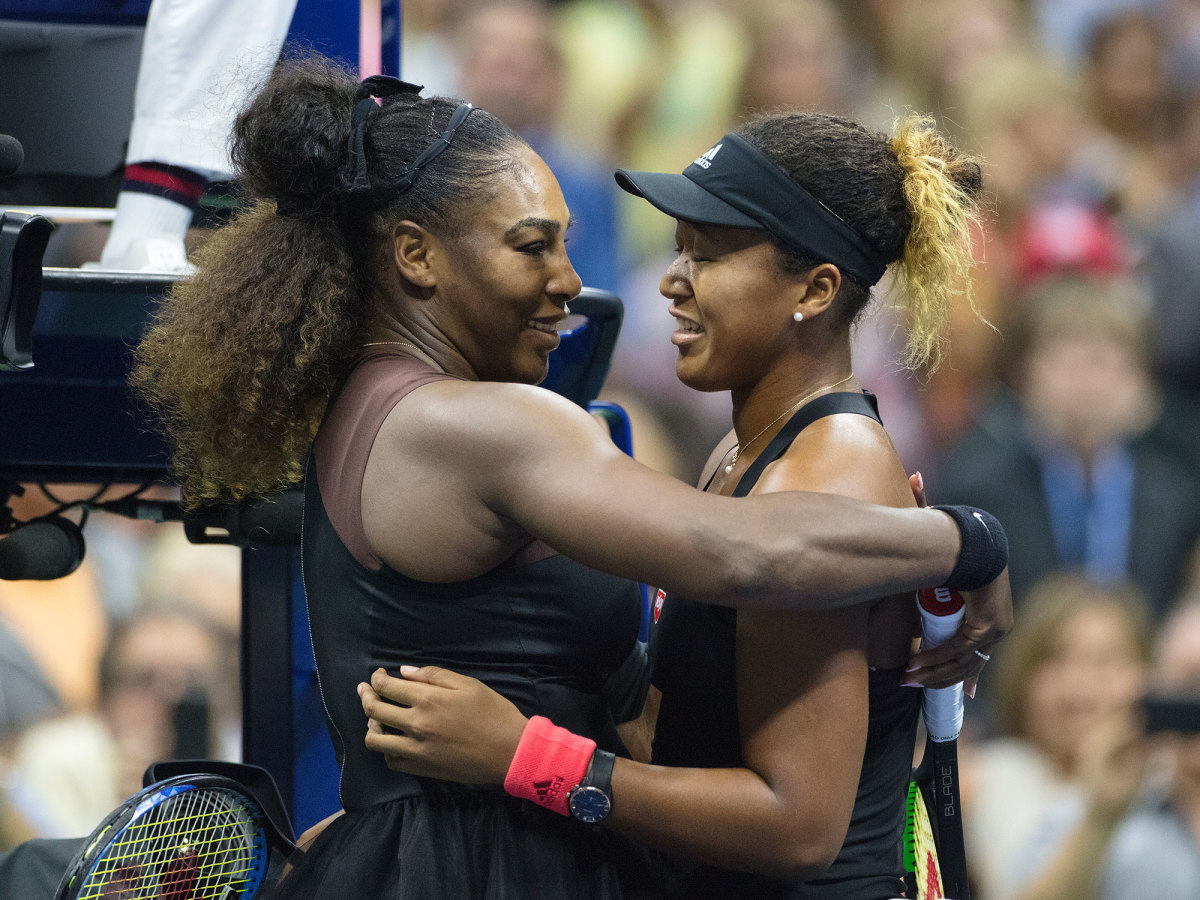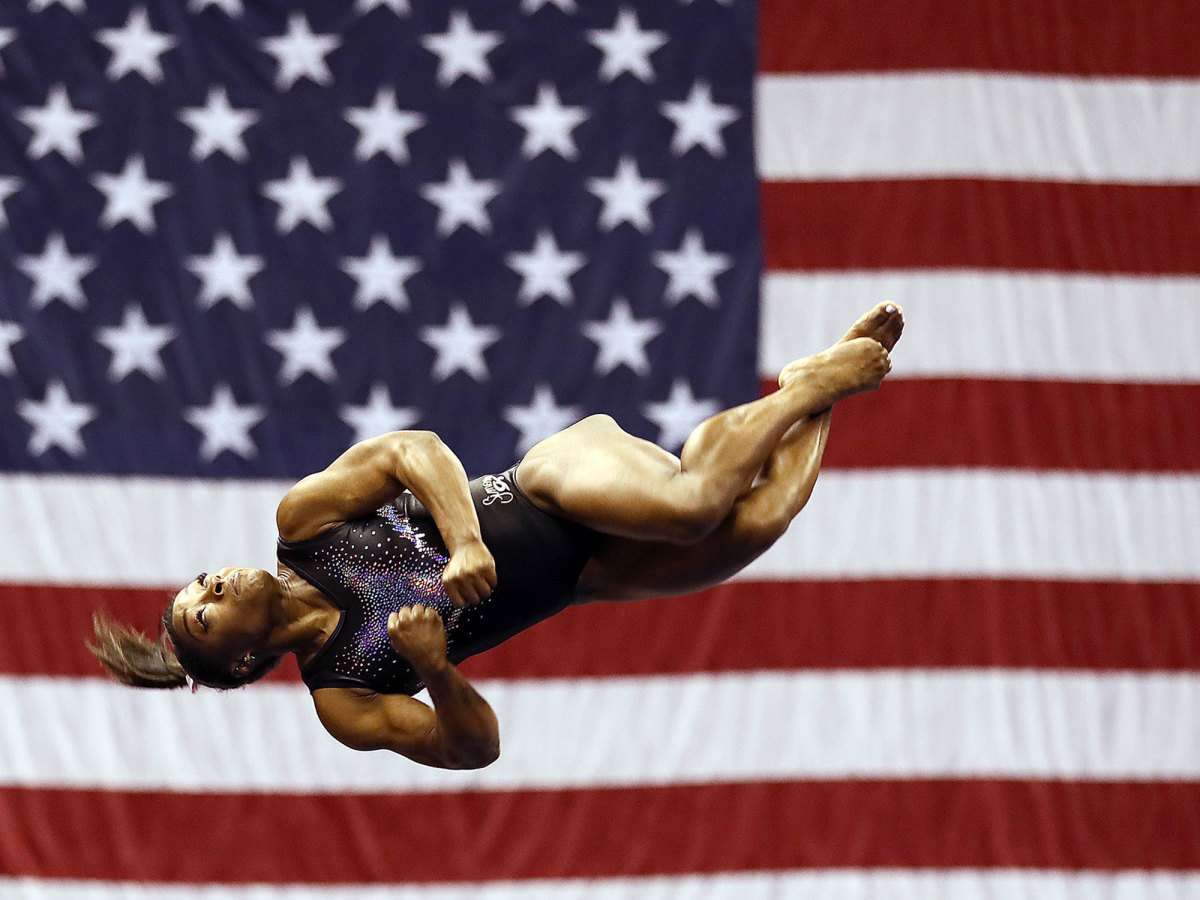Four Questions That Will Define the U.S. Open

Welcome to the Weekend Read. This week we ask four defining questions about this year's U.S. Open, get a short physics lesson and run through our favorite stories of the week. Enjoy.

Recommended Reading
• Odell Beckham Jr. Jarvis Landry. Baker Mayfield. Freddie Kitchens. John Dorsey. Welcome to Cleveland, where the Browns have all the pieces and are finally true contenders in the NFL. (By Ben Baskin)
• Obsession! Conspiracy theories! Questionable math! Welcome to Chicago and the wildest kicker competition ever held, told through the eyes of the Bears kickers who lived it. (By Kalyn Kahler)
• Another year, another October vacation. Our MLB staff ranks the most hopeless teams in baseball.
• For Hue Jackson, there’s no escaping his losses right now. (“Let’s be honest. Right now, that’s what’s on my tombstone.”) But the game losses only tell part of the story. (By Greg Bishop)
• Will Clemson repeat? Tua or Trevor for the Heisman? Which Power 5 team will disappoint the most? Our college football Crystal Ball is here.

What We're Wondering Ahead of the U.S. Open
The cast of characters changes from year to year, but the U.S. Open delivers drama like no other tennis tournament: controversial officiating, shocking upsets, marathon matches and ugly finishes. What will this year bring? Here are four big questions entering the final major of the season.
Can anyone stop Novak Djokovic?
In men’s tennis, there’s the Big 3—Roger Federer, Rafael Nadal, Novak Djokovic—and everyone else. But these days, in a best-of-five format on a hard court, the Big 3 might as well be the Big 2 and the Biggest 1. Djokovic, the defending U.S. Open champion, has won four of the last five Grand Slam events. While Nadal remains his superior on clay and Federer nearly knocked him off on grass at Wimbledon, Djokovic looked close to untouchable at last year’s U.S. Open and January’s Australian Open.
The Big 3 has combined to win every Grand Slam trophy since the start of 2017, and there’s little reason to think that will change in Flushing Meadows. If anything, the gap between the Big 3 and the rest of the tour seems to be growing, not shrinking as their age might lead us to expect. So if anyone is going to knock off the defending champ, Nadal and Federer seem the most likely candidates—though the hard courts of New York strongly favor Djokovic.
Can the next generation of men break through?
Tennis, especially these last three years, has been a tale of two tours. No woman has won more than one Grand Slam in a calendar year since 2016. The last 11 majors have produced nine different female champions, five of whom were younger than 25. Meanwhile, no man currently under 30 has won a Grand Slam title.
The generation of players currently in their late 20s—Milos Raonic, Grigor Dimitrov, Kei Nishikori—failed to knock the Big 3 off its perch. The next generation looks more promising, but while the likes of Alexander Zverev and Stefanos Tsitsipas have beaten the best, they haven’t been able to loosen the Big 3’s grip on Grand Slam silverware. Dominic Thiem, a two-time finalist at Roland Garros, has come the closest.
Generation Z’s new hope is Daniil Medvedev, who in the last year has skyrocketed from No. 57 to No. 5 in the ATP rankings. He’s yet to reach the quarterfinals of a Grand Slam, but his current form suggests he’ll make an impact at the U.S. Open.

Should we worry about Serena’s recent losses in Grand Slam finals?
Last year, Serena Williams reached the final and then proceeded to make Carlos Ramos perhaps the most famous chair umpire in history. (A year later and we’re still discussing it.) But all controversy aside, Naomi Osaka outplayed Williams in that final. Just like Williams was outplayed, significantly, by Simona Halep in this year’s Wimbledon final, and just like she was outplayed in last year’s Wimbledon final by Angie Kerber.
Before this recent string of defeats, Williams had never lost three consecutive Grand Slam finals. With 23 majors under her belt, it’s possible she just had three bad days. It’s also possible that a reduction in match play—she’s only competed in 24 matches so far this year—has mitigated her edge in major finals. The big question entering the U.S. Open is her health. Williams was forced to retire four games into the Rogers Cup final because of a back injury, and she subsequently withdrew from Cincinnati.
Who is the favorite to win the women’s draw?
Like Djokovic, Naomi Osaka is the defending champion and the world No. 1. Unlike Djokovic, though, she’s not anywhere close to a consensus favorite, having struggled at times this season since winning the Australian Open in January.
Halep won Wimbledon, her second career Grand Slam title, in July and seems poised for a deep run in Flushing Meadows. But she’s struggled in New York recently, crashing out in the opening round each of the last two years. Meanwhile, reigning Roland Garros champion Ashleigh Barty reached the fourth round at the U.S. Open last year—at the time, her best performance at a Slam—and now looks like a perennial major contender.
If she’s healthy, I’d give a slight nod to Serena over Osaka as the tournament favorite. Williams recently beat Osaka in Toronto, but a year after one of the most controversial finals in tournament history, I think most of us would welcome another rematch. Except maybe Carlos Ramos.

A Physicist Tries to Explain Simone Biles's Triple-Double
The simple answer is, no, Simone Biles does not defy the laws of physics, even if slow motion replays of her newest skill might make it look that way. She may, however, be approaching the limits of human performance.
Analyzing the video of Biles's incredible tumbling pass, David Young, a professor of physics at LSU, roughly calculated what it might take for the gymnast to go a step further. Given Biles's hang time is approximately 1.3 seconds, to fit in a theoretical third flip (and make it a triple-triple), Young estimates her launch speed would need to reach 22.6 mph; that's 8 mph faster than her estimated speed on this pass. If Biles wanted to add a twist instead, to make it a quad-double tuck, she would need to be in the air about .43 seconds longer, which would equate to a launch speed of 20.1 mph. (And even then, she'd need to slow her rotation rate to land on her feet.)
As a point of reference, Florence Griffith-Joyner's top speed when she set the world record in the 100-meter sprint was about 24 mph, and it took her 50 meters to get there. The diagonal length of the floor exercise mat is less than 56 feet. So unless Biles can find a way to flip or twist more quickly, or gather more speed within the confines of the mat, her triple-double just might represent tumbling's peak.
Best of the Rest
Editor's note: Below are some of our favorite stories of the week not published by SI. This week's list is curated by Stanley Kay.
• In The Washington Post, Eric Adelson writes about a Florida high school football team full of players from immigrant families—and how they’re responding as their relatives are threatened with deportation.
• This one is for the science nerds out there. Many scientists argue that we’re living in a geological age that we created: the Anthropocene. But in The Atlantic, Peter Brannen makes a compelling case that this supposed epoch—named for humanity’s reshaping of the planet’s ecology—will prove less an epoch than a mere blip.
• Speaking of the Anthropocene (or whatever you want to call it): Every day, we learn of some new way that humans are destroying the planet. A recent entry, as chronicled by Robinson Meyer in The Atlantic: Apparently, scientists have discovered microplastics—in addition to polluting our water supply—are accumulating in locations as remote as the Arctic.
• Ian Frazier wrote a fascinating historical piece for The New Yorker about that time—in the early 20th century, to be exact—W.E.B. Du Bois absolutely owned a prominent racist in a debate.
• Every American should read every word of The New York Times’ 1619 Project, which seeks—400 years after the first slaves arrived in America—to reframe our history to more accurately account for the legacy of slavery.
Editor’s note: What kind of stories and content would you like to see in the Weekend Read? Let's chat at SIWeekendRead@gmail.com.
